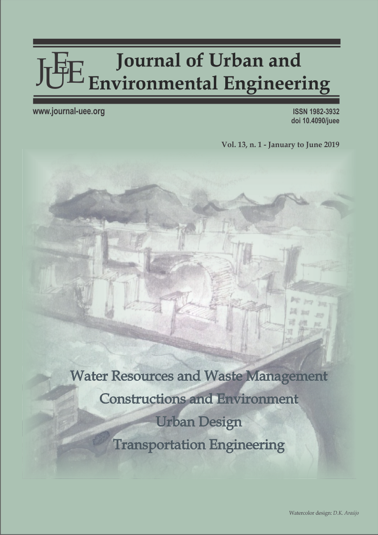AERODYNAMIC EFFECTS OF POLLUTION CONCENTRATIONS IN URBAN STREET CANYON USING TWO PASSIVE CONTROL METHODS: CROSSING UNDER BUILDING AND LOW BOUNDARY WALL
DOI:
https://doi.org/10.4090/juee.2019.v13n1.13-22Keywords:
Passive Methods, Barriers, Street Canyon, Pollutant Dispersion, Numerical Simulation.Abstract
The present work, focused on the Atmospheric boundary-layer airflows and their interactions with obstacles, particularly in relation to urban air quality, therefore two passive control methods are represented in barriers solid LBWs (Low Boundary Walls) and crossings under building, in order to investigate the dynamic impacts in the center urban canyon road. These passive control solutions are designed for reducing the concentrations airflows polluted necessary, while a correct air quality in the urban areas. For these reasons, the passageways under building and LBWs models have been performed with a two dimensional numerical ANSYS-CFX code, rendering it ideal for examining the concentration distribution within street canyons of H1/H2 = 0.5-1-1.5 and the dynamics effects of pollution concentrations of vehicle emissions of sulfur hexafluoride (SF6), which it is taken as a tracer gas within the symmetrical urban street canyon. However the Reynolds-averaged Navier–Stokes equations and the k-ɛ turbulence model are applied in order to close the equations system. The results achieved are evidence about the diminishing of the pollutant concentrations normalized in in the leeward and windward of the urban street canyonDownloads
Download data is not yet available.
Downloads
Published
2019-10-05
Issue
Section
Articles




